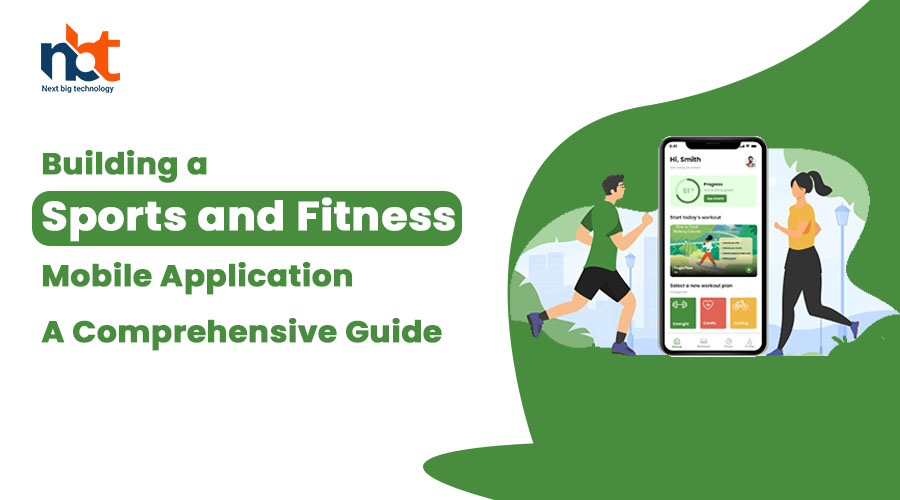Introduction:
Sports and fitness mobile applications have revolutionized the way individuals engage with sports activities, track their fitness goals, and connect with like-minded individuals. These apps provide a wide range of features, including workout tracking, nutrition guidance, social networking, and access to fitness classes. If you’re considering building a sports and fitness mobile application, this comprehensive guide will walk you through the step-by-step process. From defining your app’s objectives to designing an intuitive user interface, integrating essential features, and ensuring a seamless user experience, we’ll cover everything you need to know to create a successful sports and fitness mobile application. Let’s dive in!
- Define Your App’s Objectives and Target Audience:
- Identify the focus of your sports and fitness app (workout tracking, nutrition, social networking, etc.)
- Determine your target audience (athletes, fitness enthusiasts, beginners, etc.)
- Analyze the competition and identify unique features or services for your app
- Choose the Right Platform and Technology:
- Select the mobile app platform (iOS, Android, or both)
- Determine the programming languages and frameworks (Swift, Kotlin, React Native, Flutter, etc.)
- Consider the backend infrastructure and integration requirements
- Design an Intuitive User Interface:
- Create wireframes and prototypes to visualize the app’s layout and user flow
- Design a visually appealing and user-friendly interface
- Focus on simplicity, clear navigation, and intuitive controls
- Implement User Registration and Authentication:
- Enable users to create accounts and log in securely
- Implement password encryption and two-factor authentication (2FA)
- Customize user profiles and preferences
- Integrate Workout Tracking and Goal Setting:
- Provide features for tracking workouts, including distance, time, and calories burned
- Implement goal setting and progress tracking to motivate users
- Enable users to create personalized workout plans and schedules
- Incorporate Nutrition and Meal Planning:
- Provide nutritional guidance and information on calorie intake
- Enable users to track their daily food intake and macronutrients
- Implement meal planning features and offer recipe suggestions
- Enable Access to Fitness Classes and Training Programs:
- Partner with fitness trainers or gyms to provide access to virtual or in-person classes
- Implement video streaming for live or pre-recorded workout sessions
- Offer a variety of fitness programs tailored to different goals and preferences
- Implement Social Networking and Community Features:
- Enable users to connect with friends, trainers, or other fitness enthusiasts
- Provide features for sharing workouts, achievements, and progress updates
- Implement challenges, leaderboards, and virtual competitions
- Integrate Wearable Device and Health App Integration:
- Enable integration with popular wearable devices (fitness trackers, smartwatches, etc.)
- Sync user data, such as steps, heart rate, and sleep, for accurate tracking
- Integrate with health apps to provide a holistic view of users’ fitness and health data
- Enable Personalized Recommendations and Insights:
- Implement recommendation algorithms based on user preferences and performance
- Offer personalized workout suggestions or class recommendations
- Provide insights and analysis on users’ progress and performance
- Implement In-App Purchases and Subscription Models:
- Offer premium features or additional content through in-app purchases
- Provide subscription plans for exclusive access to advanced features or content
- Implement secure payment gateways for seamless transactions
- Conduct Thorough Testing and Quality Assurance:
- Test the app for functionality, usability, and performance
- Conduct rigorous testing on different devices, screen sizes, and operating systems
- Collect user feedback and make necessary improvements before the app launch
- Launch and Promote Your App:
- Prepare for app store submission and approval process
- Develop a marketing strategy to attract users and create brand awareness
- Collaborate with fitness influencers, gyms, or sports organizations for promotion
Conclusion:
Building a sports and fitness mobile application requires careful planning, engaging features, and efficient development. By defining your app’s objectives, choosing the right platform and technology, designing an intuitive user interface, integrating essential features like workout tracking, nutrition guidance, social networking, and ensuring a seamless user experience, you can create a successful sports and fitness mobile application. Remember to prioritize user engagement, personalized recommendations, and continuous improvement. With a well-developed app, you can empower individuals to achieve their fitness goals, connect with a community of like-minded individuals, and transform the way they approach sports and fitness activities in the digital age.

















